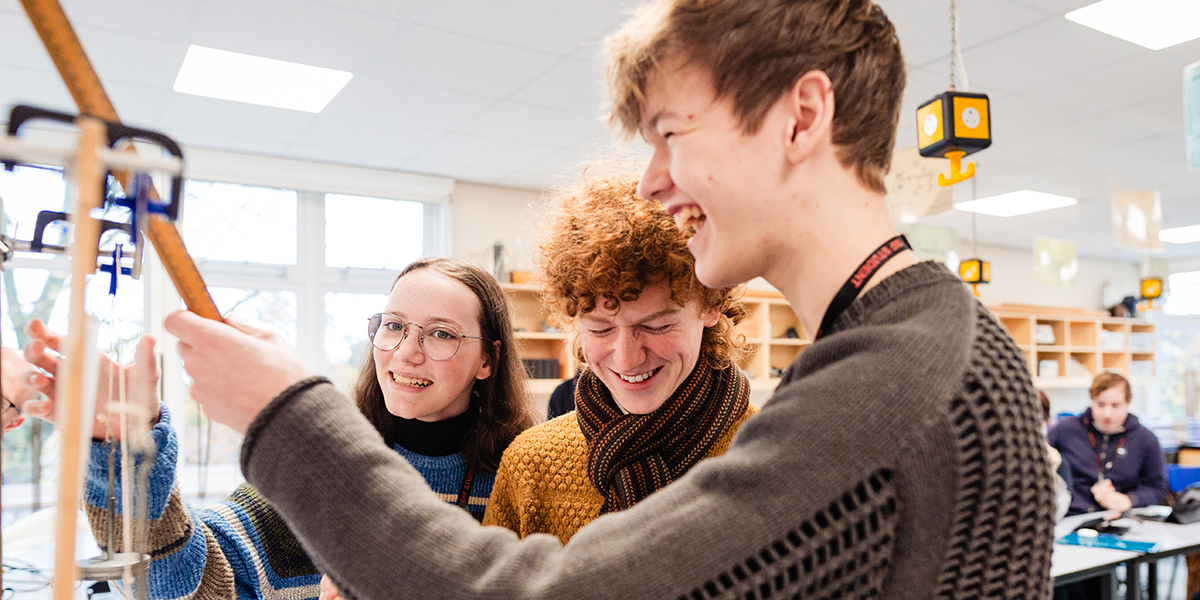
Physics - A Level
"I have enjoyed the variety and challenges that A Level Physics has given me.”
Entry Requirements
Two GCSEs at grade 4 plus a grade 6 in Maths and 6 in Science
Subject Intent
Physics develops key transferable skills through the study of the universe from the smallest to the largest scales. Some of the highest skills shortages in Yorkshire are in STEM and our curriculum is designed to develop scientific methodology, awareness of the advances of technology and recognition of the value of Physics in society so that students can go on to enjoy careers in fields such as engineering (mechanical, structural and civil), geophysics and radiation protection.
Course Introduction
Physics is the science that attempts to illustrate how nature works using the language of mathematics. It is often considered the most fundamental of all the natural sciences. Its theories try to describe the behaviour of the smallest building blocks of matter, light, the Universe and everything in-between.
It is a challenging and varied A Level in which you will examine waves, quantum physics, nuclear and particle physics, medical imaging and energy. Physics not only helps you to answer questions about the world around you, but it also forms the basis of most current and potential future technology.
Practical activities in our modern and well-equipped lab are embedded throughout the course which will enhance your understanding of physics theory. We also have visiting guest lecturers who will share their experience of where physics has taken them in their career.
The course contains a lot of high-level Maths and therefore students studying Physics normally also take A Level Maths alongside. This is also essential if you want to continue onto Physics or Engineering at university.
Course Modules
First year
Module 1: Development of Practical skills - Practical activities are embedded throughout the course which contribute to the achievement of the practical endorsement as well as enhancing learners’ understanding of physics theory
Module 2: Foundations of Physics - An introduction to physical quantities and their units; making measurements and analysing data
Module 3: Forces and Motion - Mechanics involves the study of how objects move, their velocities and accelerations and the forces that cause them to move. It also deals with the properties of materials.
Module 4: Electrons, Waves and Photons - This involves the study of electrical circuits, quantum physics and spectra along with the interference and diffraction of light and the basic properties of waves.
Second Year
Module 5: Newtonian World and Astrophysics - This module takes many of the ideas year one further with more on Newton’s Laws of motion and Gravitational Fields including circular motion and oscillations, followed by an introduction to Thermal Physics and Astrophysics and Cosmology.
Module 6: Particles and Medical Physics - This module to some cutting edge Physics including Electric and Magnetic fields, Nuclear Physics with fission, fusion and quark theory, and Medical Imaging.
Assessment
The course is assessed by three written examinations containing a mixture of multiple-choice questions, calculations, short answer questions and extended response questions. There is also a Practical Endorsement which is reported separately and is teacher assessed. Learners complete a minimum of twelve practicals over the two years covering a range of technical skills. Learners record their experiments in a separate file or log book.
Course Fact
A level physics students measure the size of an atom and use space telescope data to calculate the age of the Universe, in seconds!
Example Career Opportunities
Physicist | Nuclear Engineer | Architect | Systems Developer | Astronaut | Metallurgist
Renewable Energy Engineer | Geophysicist | Climate Scientist | Astronomer